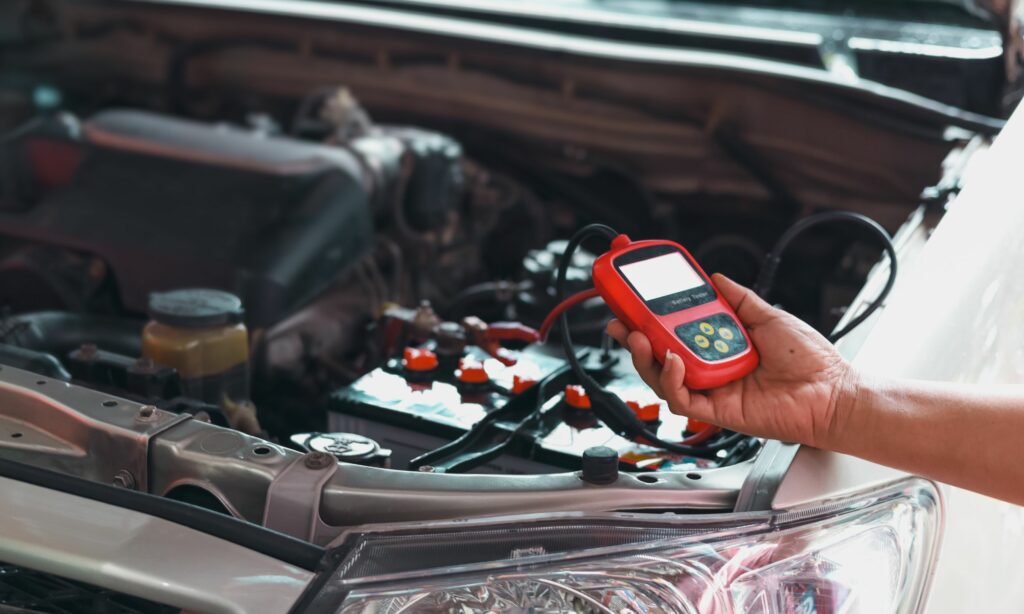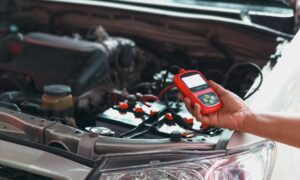Buying a pre-owned car can be a smart and economical choice, but it requires careful consideration to ensure you’re making a good investment. A thorough inspection is crucial to avoid costly surprises and ensure the vehicle is in good condition. This guide will walk you through the key areas to focus on when inspecting a pre-owned car, from the exterior and interior to under the hood and the test drive. By following these steps, you’ll be well-equipped to make an informed decision and find a reliable car that meets your needs.
Exterior Inspection
The first step in inspecting a pre-owned car is to carefully examine its exterior. This can reveal a lot about the car’s condition and any potential issues. Here’s what to focus on:
Check the Body for Dents, Scratches, and Rust: Walk around the car and look for any dents, scratches, or rust spots on the body. Small dings and scratches are normal, but large dents and rust can indicate more serious damage or neglect.
Inspect the Paint Job for Consistency: Examine the paint for any inconsistencies in color or texture. Uneven paint can be a sign of previous repairs or repainting, which might indicate the car has been in an accident.
Examine the Tires for Wear and Proper Alignment: Look at the tires to check for even wear across the treads. Uneven wear can indicate alignment issues or problems with the suspension. Also, make sure the tires have enough tread depth left and that they match in brand and type.
Look at the Lights and Signals for Functionality: Test all the exterior lights, including the headlights, taillights, brake lights, and turn signals. Ensure they are all working correctly. Non-functioning lights could be a simple fix, but they might also signal electrical issues.
Conducting a thorough exterior inspection allows you to get a good sense of the car’s overall condition and identify any potential red flags that might warrant further investigation or negotiation.
Interior Inspection
Once you’ve thoroughly examined the exterior, it’s time to move on to the car’s interior. The condition of the interior can provide insights into how well the car has been maintained and can impact your comfort and driving experience. Here’s what to focus on:
Assess the Condition of the Seats and Upholstery: Inspect the seats for any signs of wear and tear, such as rips, stains, or sagging. Check the upholstery for any damage or excessive wear, and test the seat adjustments to ensure they are functioning properly.
Check the Dashboard and Controls for Functionality: Turn on the car and check the dashboard for any warning lights. Test all the controls, including the infotainment system, air conditioning, heating, and any other electronic features. Make sure all buttons, knobs, and switches are working as they should.
Test the Air Conditioning, Heating, and Electronics: Ensure the air conditioning and heating systems are operating efficiently. Test all electronic features, such as the radio, GPS, and power windows. Verify that the speakers and other audio components are functioning correctly.
Ensure the Windows and Locks Operate Smoothly: Test all the windows to see if they open and close smoothly. Check that the door locks, both manual and electronic, are working properly. Pay attention to any unusual noises or delays in operation, as these can indicate underlying issues.
By conducting a detailed interior inspection, you can identify any potential problems that might affect your comfort or the car’s functionality. This step is crucial for ensuring the car meets your standards and expectations for daily use.
Under the Hood
Inspecting under the hood is a crucial step in assessing the mechanical health of a pre-owned car. This section will guide you through the key areas to examine to ensure the engine and related components are in good condition.
Inspect the Engine for Leaks, Corrosion, and Fluid Levels: Open the hood and take a close look at the engine. Check for any signs of oil, coolant, or other fluid leaks. Look for corrosion on the battery terminals and other metal parts. Ensure all fluid levels, including engine oil, coolant, brake fluid, and power steering fluid, are within the recommended ranges.
Check the Battery Condition and Connections: Examine the battery for any signs of damage or corrosion. Check the battery terminals and cables to ensure they are secure and free from corrosion. A weak or damaged battery can lead to starting problems and electrical issues.
Examine Belts and Hoses for Wear and Tear: Inspect the belts and hoses for any signs of cracking, fraying, or other wear and tear. Belts should be tight and free of damage, while hoses should be firm and not brittle. Worn-out belts and hoses can lead to engine problems and should be replaced if necessary.
Look at the Oil and Transmission Fluid: Pull out the dipstick and check the engine oil for color and consistency. Clean oil should be amber and free of debris. Dark, dirty oil can indicate poor maintenance. Similarly, check the transmission fluid for proper levels and cleanliness. Healthy transmission fluid is typically pink or red and free of particles.
This step is essential for evaluating the car’s reliability and longevity.
Test Drive
Taking the car for a test drive is one of the most important steps in the inspection process. It allows you to experience how the car performs on the road and identify any potential issues that may not be visible during a static inspection.
Evaluate the Car’s Performance on Different Road Conditions: Drive the car on a variety of road surfaces, including highways, city streets, and rough or uneven roads. This will help you assess how the car handles in different conditions and whether it meets your driving needs.
Listen for Unusual Noises from the Engine or Brakes: Pay close attention to any unusual sounds while driving, such as knocking, clicking, or squealing. These noises can indicate issues with the engine, brakes, or suspension. If you hear anything concerning, it may be worth having a mechanic take a closer look.
Test the Steering and Suspension for Responsiveness: Evaluate the responsiveness of the steering and how the car handles corners and turns. The steering should feel smooth and precise, without excessive play. Additionally, pay attention to how the car responds to bumps and dips in the road, as this can indicate the condition of the suspension.
Check the Brakes for Effectiveness and Smoothness: Test the brakes by applying them gently and firmly at various speeds. The car should come to a smooth and controlled stop without pulling to one side or making strange noises. Soft or spongy brakes can indicate a problem with the braking system that needs to be addressed.
Test-driving the car helps you gain valuable insights into its performance and identify any issues that might affect your driving experience.
Vehicle History Report
Obtaining a vehicle history report is a critical step in the car inspection process. This report provides a comprehensive overview of the car’s past, helping you make an informed decision before purchasing a pre-owned vehicle.
Importance of Obtaining a Vehicle History Report: A vehicle history report can reveal vital information about the car’s background that may not be apparent from a physical inspection alone. It includes details about previous owners, accident history, and any reported damage or repairs.
What to Look for in the Report: Accidents, Ownership History, Service Records: Carefully review the report for any signs of accidents or significant damage. Multiple accidents or major repairs can affect the car’s long-term reliability and value. Additionally, check the ownership history to see how many owners the car has had and how frequently it has changed hands. A well-documented service history is also essential, as it shows that the car has been properly maintained over time.
How to Use the Report to Make an Informed Decision: Use the information in the vehicle history report to assess the car’s overall condition and potential risks. If the report reveals any concerning details, such as frequent repairs, inconsistent mileage, or serious accidents, you might want to reconsider your purchase or negotiate a lower price. Conversely, a clean report with a well-maintained service history can give you confidence in the car’s quality and reliability.
By obtaining and reviewing a vehicle history report, you can uncover crucial information about the car’s past, helping you avoid potential issues and make a well-informed decision. You want to ensure that you invest in a vehicle that is both reliable and worth the price.
Professional Inspection
Even after a thorough personal inspection, it’s a good idea to have a professional mechanic take a look at the car. A professional inspection can uncover hidden issues that you might miss and provide additional peace of mind.
When to Consider Getting a Professional Mechanic’s Opinion: If you’re serious about purchasing a particular pre-owned car, especially if it’s a high-value or complex vehicle, it’s worth the investment to have it professionally inspected. This step is particularly important if you’ve noticed any potential issues during your own inspection.
How a Professional Inspection Can Uncover Hidden Issues: A professional mechanic has the expertise and tools to conduct a detailed inspection of the car’s mechanical and electronic systems. They can identify problems that are not immediately visible, such as issues with the engine, transmission, or electrical system. Mechanics can also run diagnostic tests to check for error codes and other signs of trouble.
The Cost of Professional Inspections and How They Can Save Money in the Long Run: While a professional inspection typically costs a few hundred dollars, it can save you thousands in the long run by helping you avoid a car with serious problems. If the mechanic finds significant issues, you can use this information to negotiate a lower price or decide not to buy the car altogether.
By having a professional mechanic inspect the car, you can gain a deeper understanding of its condition and avoid potential pitfalls. This step is an investment in your peace of mind and financial well-being, ensuring that you make a sound decision when purchasing a pre-owned vehicle.
Ensuring a Wise Investment
Thoroughly inspecting a pre-owned car before purchase is crucial to making a wise investment. From the exterior and interior to under the hood and during a test drive, every step provides valuable insights into the car’s condition. Additionally, obtaining a vehicle history report and considering a professional inspection can reveal hidden issues and give you greater confidence in your decision.
At Inside Car Guys, we understand the importance of transparency and quality when it comes to buying a pre-owned car. Our team is here to help you every step of the way, ensuring you find a reliable vehicle that fits your needs and budget. Visit us today to explore our wide selection of pre-owned cars and benefit from our expert advice. Make your next car purchase with confidence, knowing you’ve done your due diligence with Inside Car Guys.






